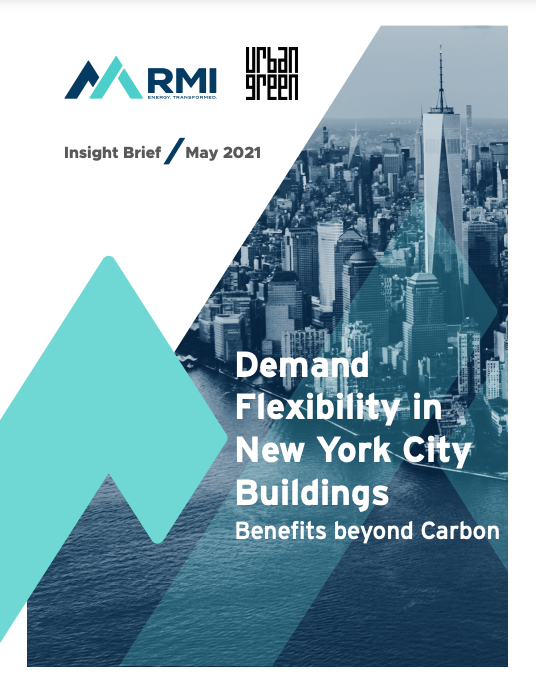Full Title: Demand Flexibility in New York City Buildings
Author(s): Cara Carmichael, Edie Taylor, Connor Usry
Publisher(s): Rocky Mountain Institute (RMI), Urban Green Council
Publication Date: May 30, 2021
Full Text: Download Resource
Description (excerpt):
Demand flexibility shows significant potential to reduce carbon emissions from the buildings sector, as RMI found in the report The Carbon Emissions Impact of Demand Flexibility. Demand flexibility is a building’s ability to shed or shift its energy demand from one time to another, based on near-real-time signals such as the price of electricity or the carbon intensity of the grid. With the right signal structure, laws such as New York City’s Local Law 97 (LL97) could enable demand flexibility, which has the potential to cut NYC building emissions by 40 percent or so as the grid approaches full decarbonization.
This insight brief, Demand Flexibility in New York City Buildings: Benefits beyond Carbon, builds on that analysis to show that demand flexibility offers benefits in addition to emissions reductions.
